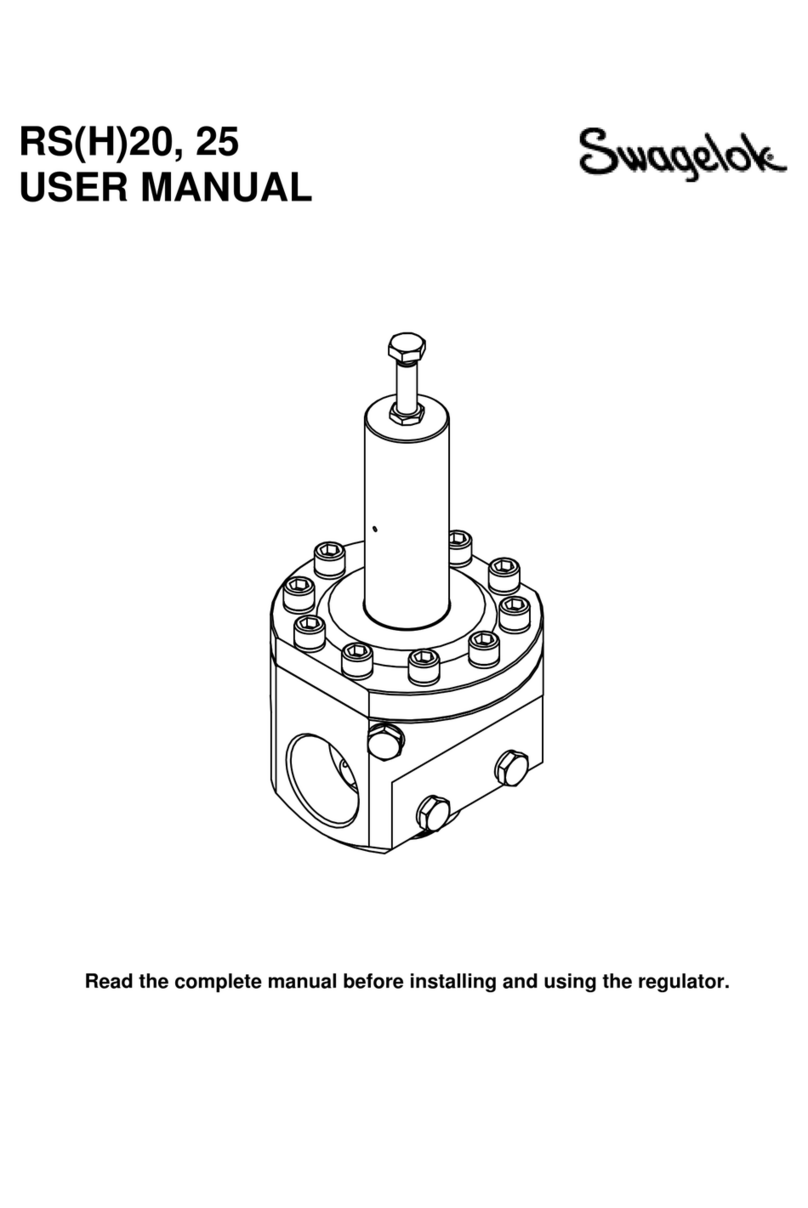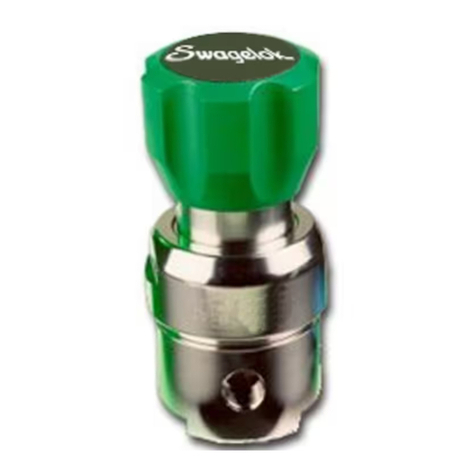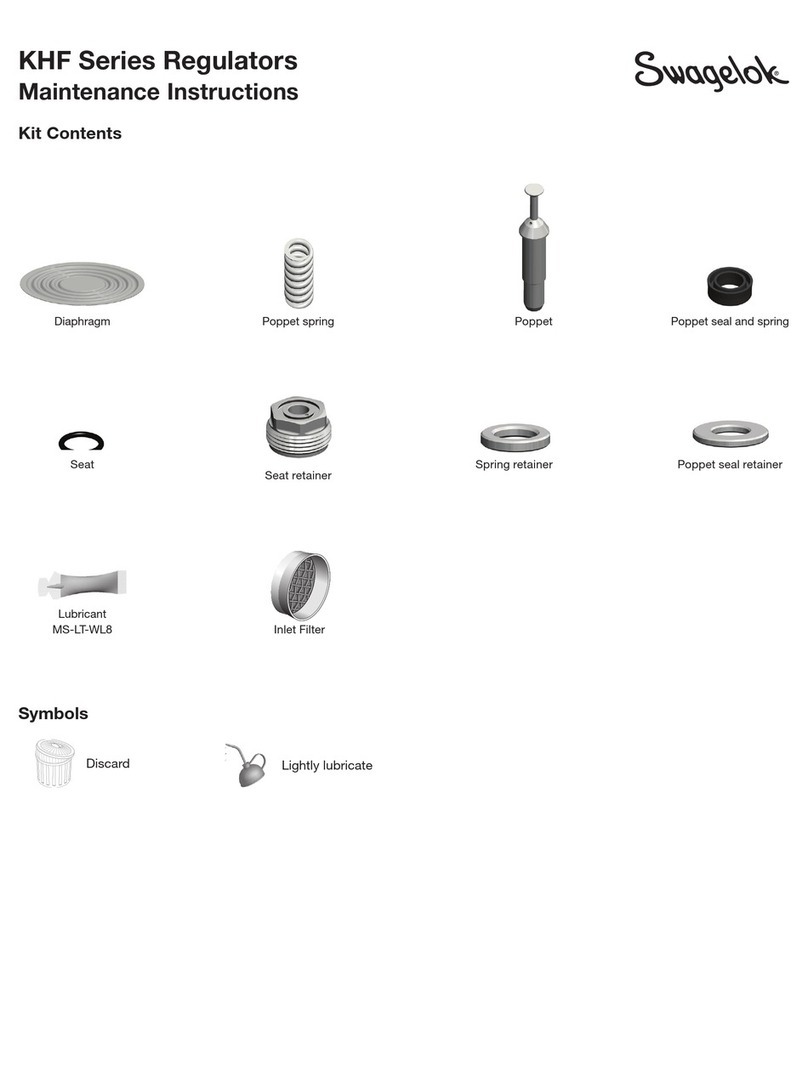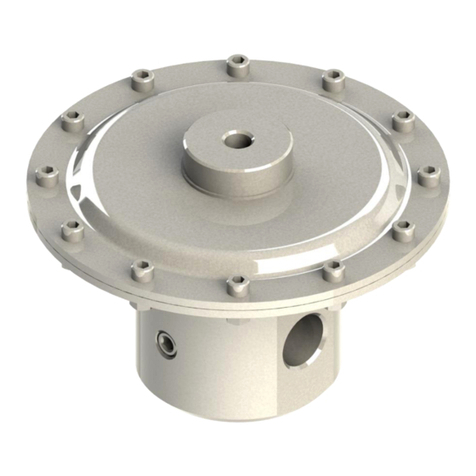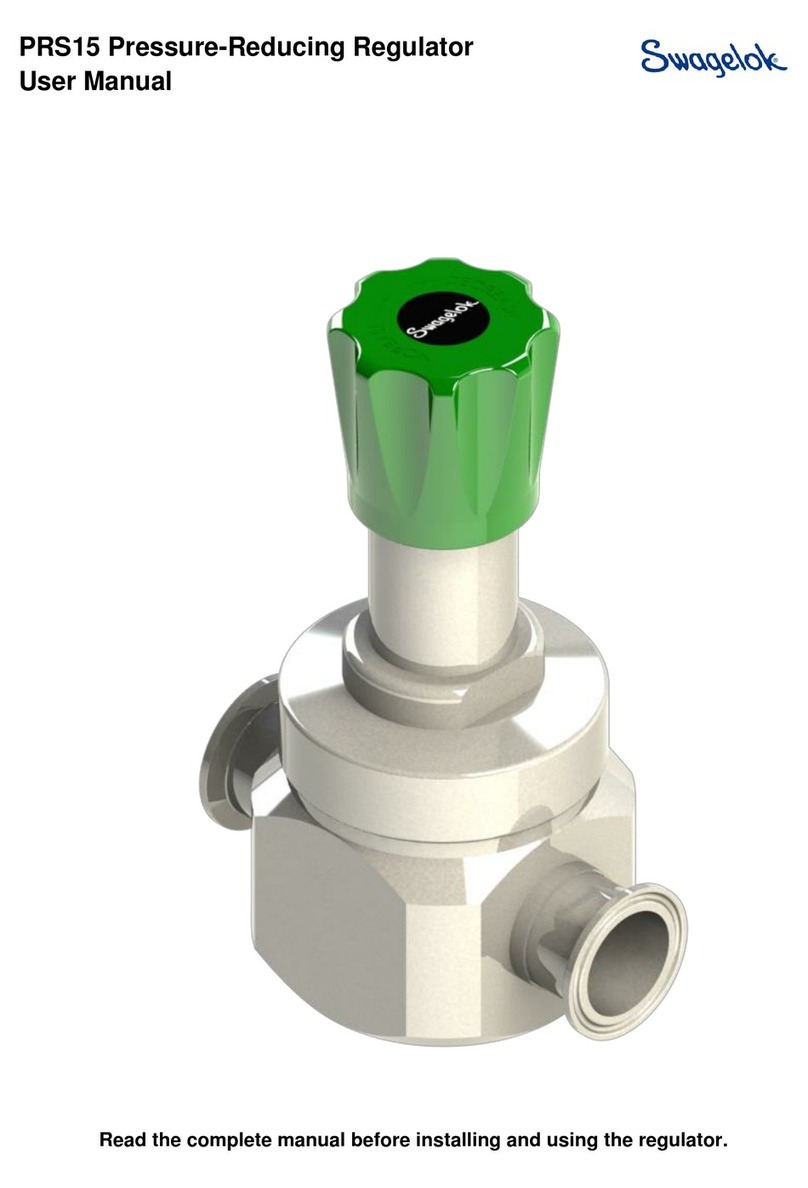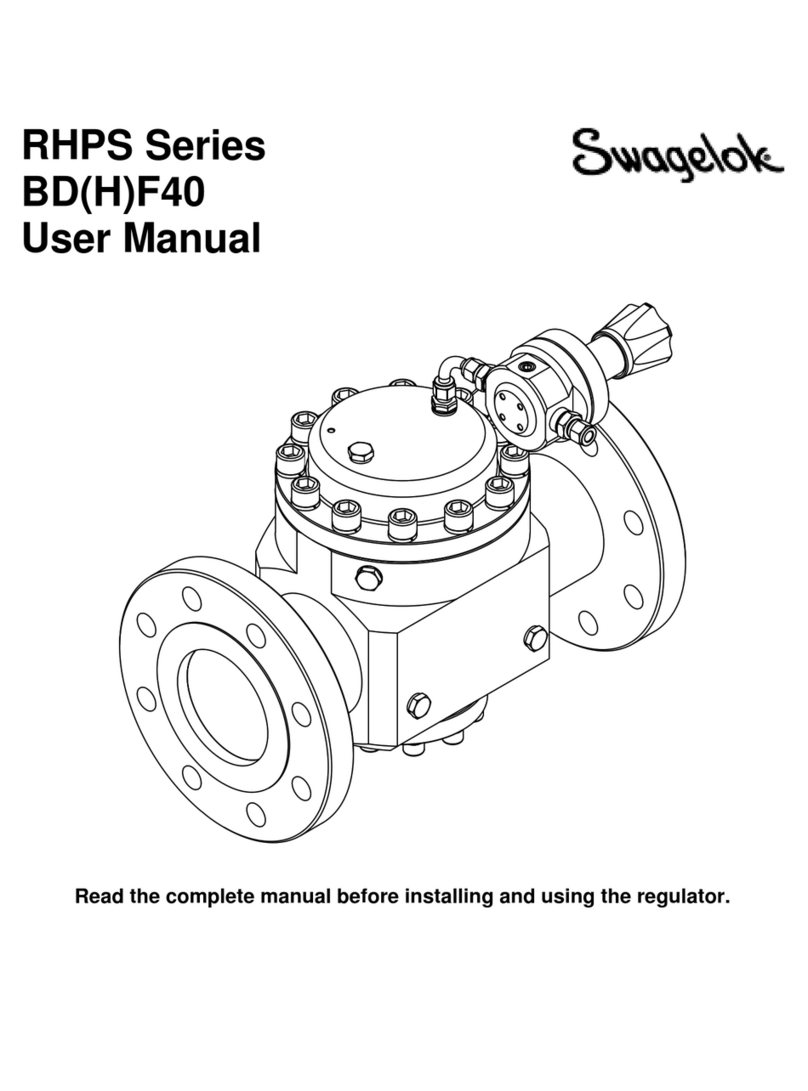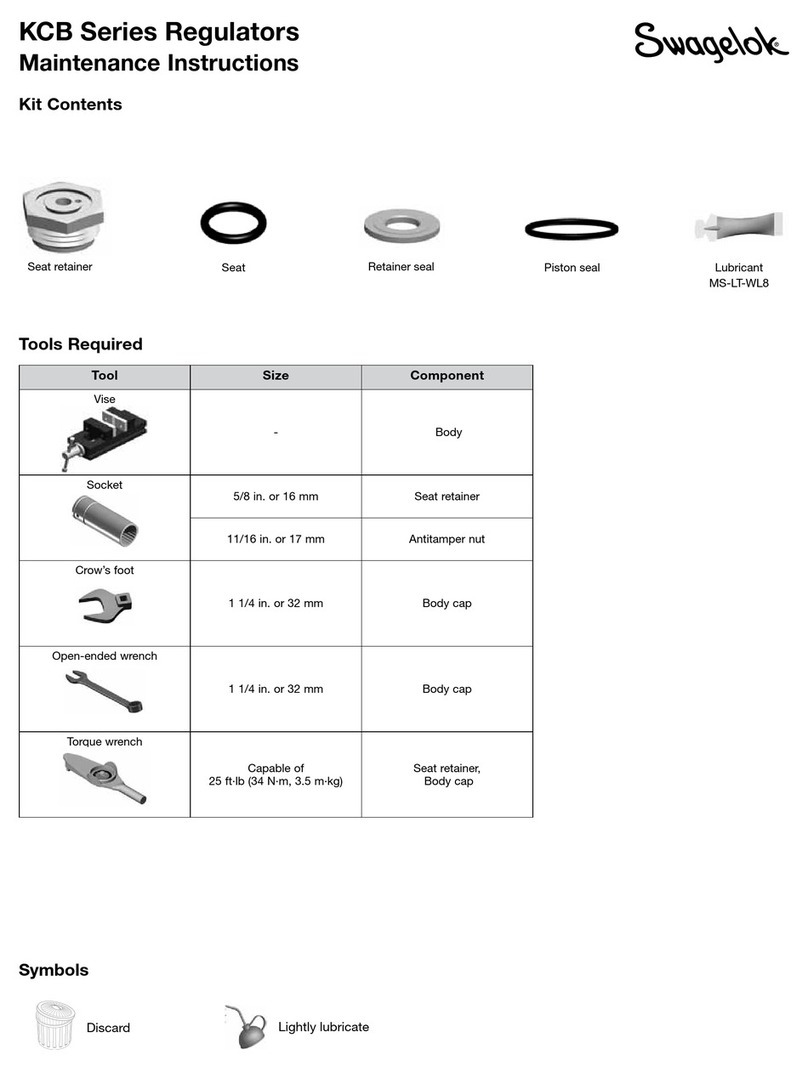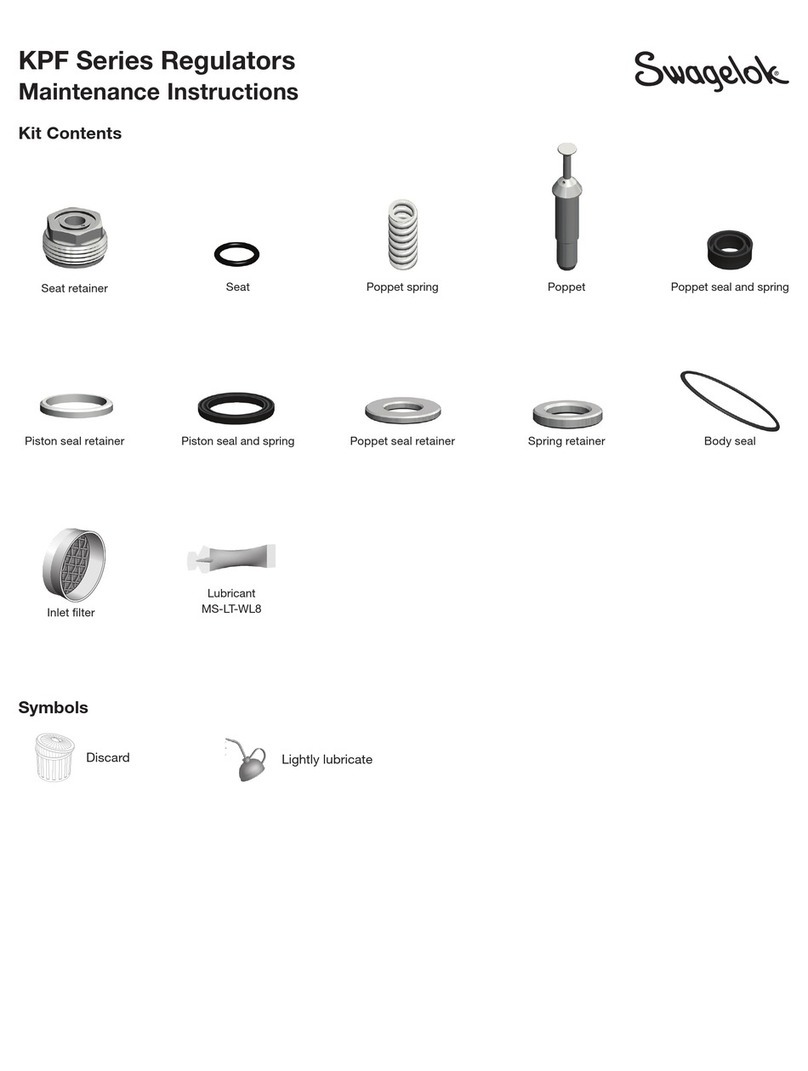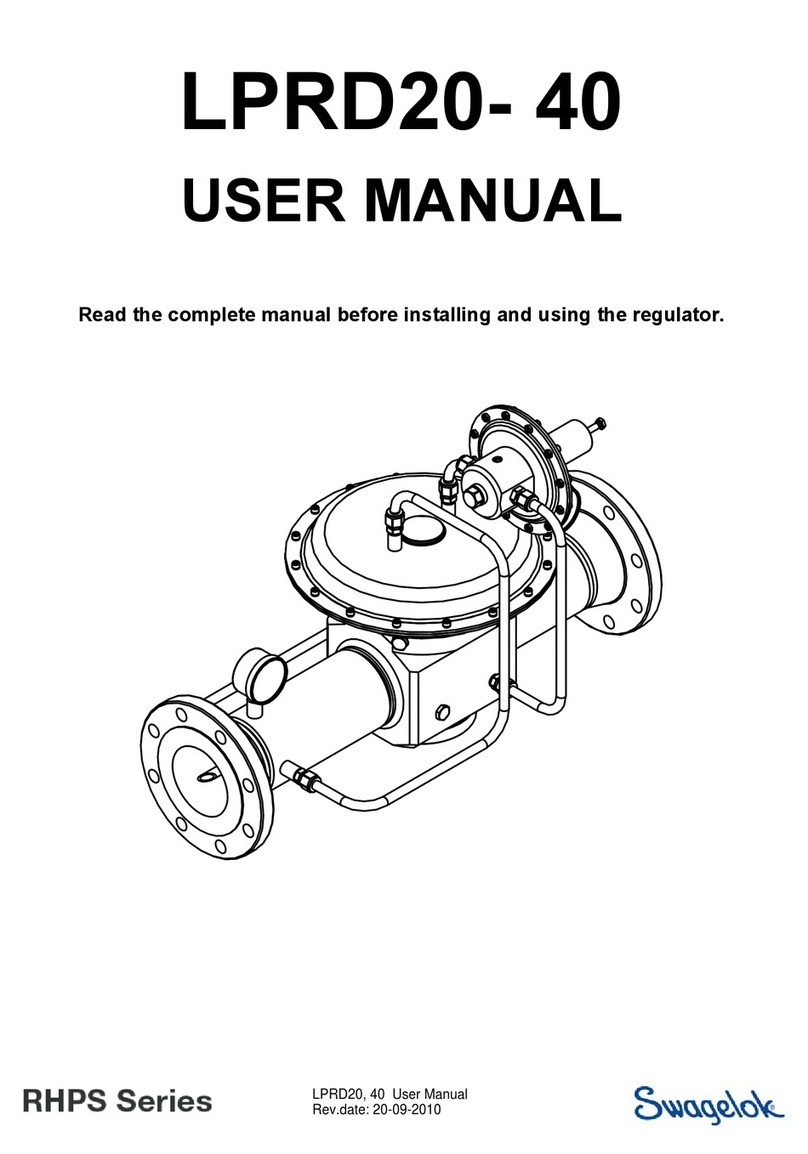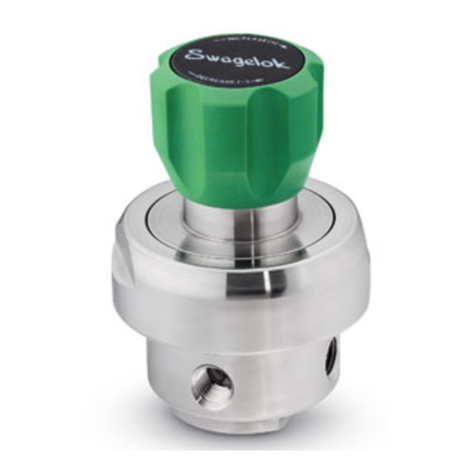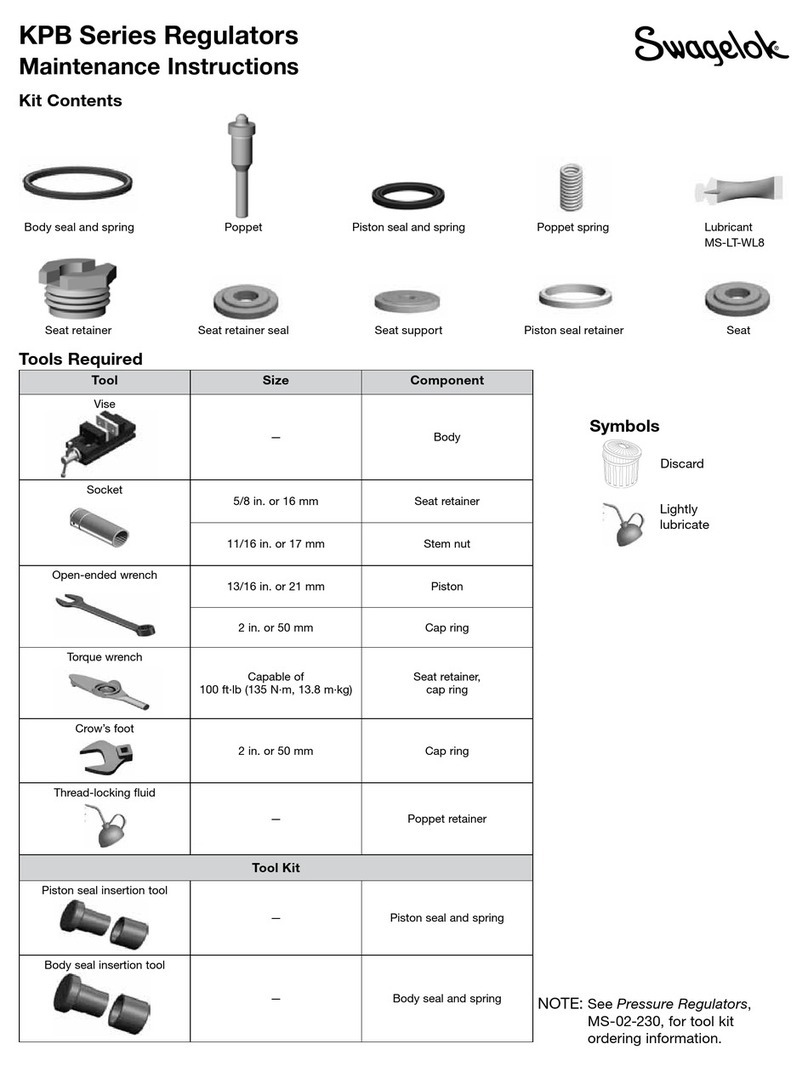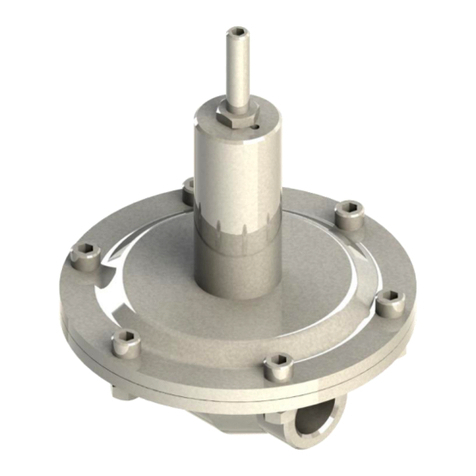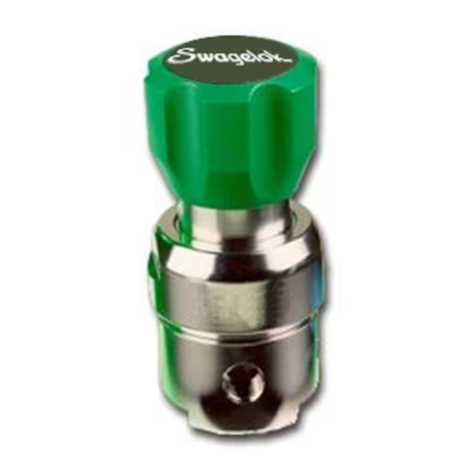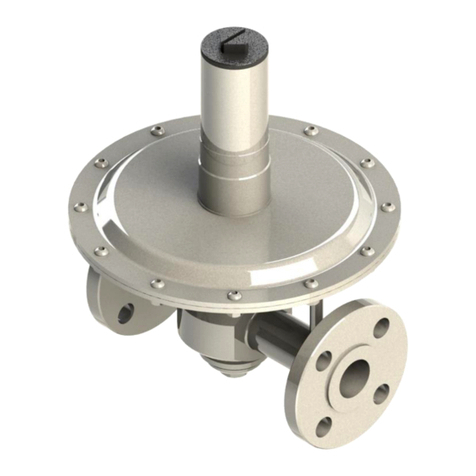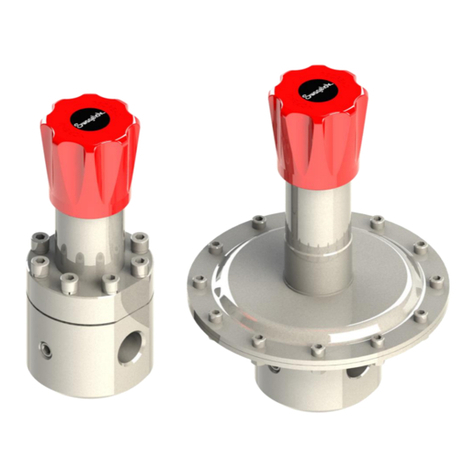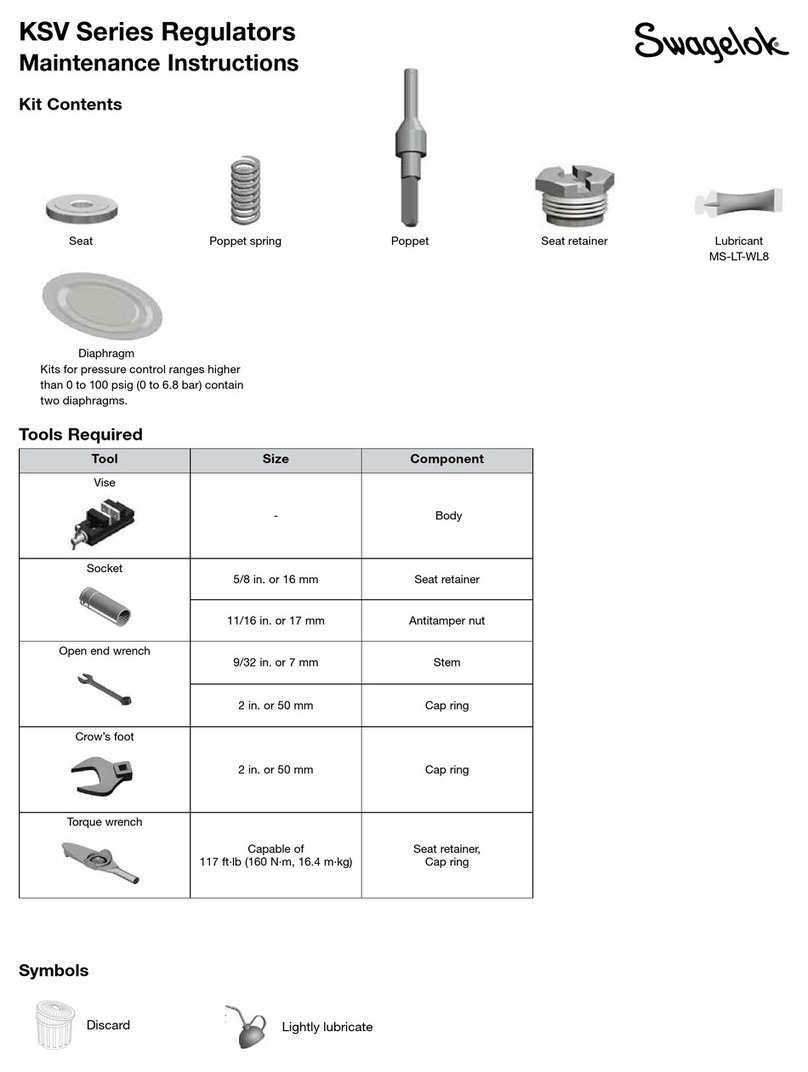5
BS(H)2 User Manual
Rev.date: 20-09-2010
3 Operation
3.1 Required tools for operation
For changing the set pressure on a standard regulator, no tools are required.
3.2 Points of attention before operation
-The adjustment knob is provided with an anti-turnout locking ring, don't force it.
-The product can be hot or cold, depending on the environment temperature and the used media
temperature. Take the necessary precautions before operating or touching the product.
-If this regulator is used with hazardous or toxic media, take the necessary safety precautions to
ensure a safe workspace and your personal safety.
Vent to a safe environment away from people and ensure adequate ventilation.
-After flow, the inlet pressure will fall a little under the set pressure.
This is because of the closing force required for bubble-tight closing of the regulator.
This phenomenon is usually referred to as the “reseat pressure” and does not indicate a problem
with the regulator.
-An increase in the flow will result in a rise of the set pressure.
A decrease in the flow will result in a fall of the set pressure.
This is because of the force required for opening the valve of the regulator.
This phenomenon is usually referred to as the “accumulation pressure” and does not indicate a
problem with the regulator.
-An increase of the outlet pressure will result in a fall of the set pressure.
A decrease of the outlet pressure will result in a rise of the set pressure.
This phenomenon is usually referred to as the “dependency” and does not indicate a problem with
the regulator.
Each regulator type has its own dependency, which is related to the ratio between the effective seat area
and the sensing area. The approximate change can be calculated as shown below:
ΔP1 = ratio x ΔP2
A ratio of 1/X means that for every pressure change to P2 of X bar, the P1 pressure will change 1 bar:
BS(H)2, 0-10 bar: ratio = 1/224
BS(H)2, 0-25 bar: ratio = 1/224
BS(H)2, 0-100 bar: ratio = 1/74
BS(H)2, 0-175 bar: ratio = 1/34
BS(H)2, 0-350 bar: ratio = 1/17
BSH2, 0-700 bar: ratio = 1/7
Example:
Regulator with ratio 1/17
Start position: End position
P1 = 300 bar P1 = ?? bar
P2 = 0 bar P2 = 250 bar
ΔP1 = ratio x ΔP2
ΔP1 = 1/17 x (250-0)
ΔP1 = 14,7 bar
So, as a result of a pressure rise in the outlet pressure from 0 to 250 bar, the set pressure will fall from
300 bar to approximately 285,3 bar without adjusting the regulator.
